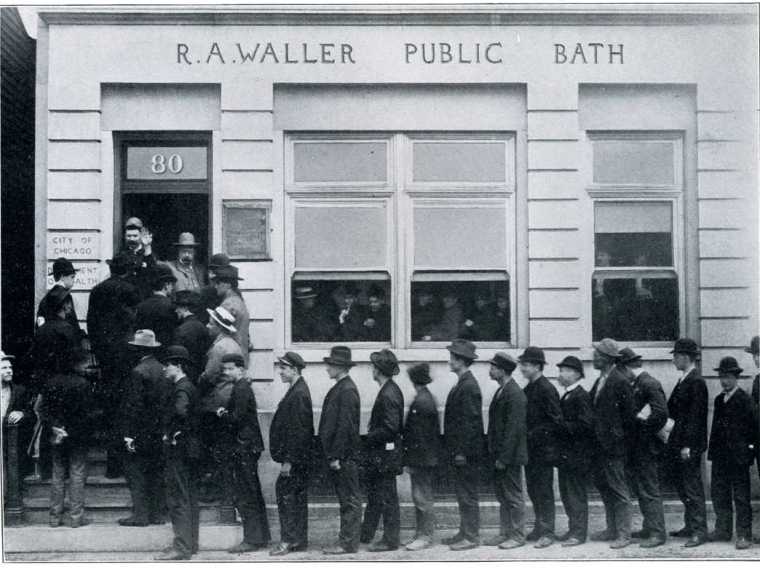Today almost every living space in Chicago contains bathing facilities. Indeed they are required by the Municipal Code.
It hasn’t always been that way. Early in the city’s history bathing was difficult, time consuming and, according to The Dirt on Clean, of dubious social propriety. Running water did not exist. Bathing facilities were limited to wealthy private homes. In the summer it was possible to bath in Lake Michigan.
The first Municipal Code (1837) prohibited bathing in the lake and rivers during daylight hours except for in remote locations. By 1873, daylight bathing was permitted with the proviso that a suitable bathing costume was worn.
By now running water was available. Some residences even had boilers. Reformers began a push to bathe everyone. Once a week was the goal. The city stepped in and opened the Carter H. Harrison Public Bath in 1894. Twenty more public baths were built. Women could bathe two days a week, men five. Sometimes each ethnic group had its own day. Washing "the Great Unwashed" and the Reports of the Chicago Department of Health tell the story.
Private baths were still scarce. An early reformer reported that while nearly a third of the residences in an upscale German district had bathtubs, another immigrant district had one bathtub for 1,000 people, and that was on the roof being used to make California raisin punch.
As the 20th century progressed, running water was required by the Building Code and bathtubs in homes became common. Bathing beaches were built along Lake Michigan, and the great unwashed were now clean. The last of the public baths closed in 1979.
Commercial public baths also existed. Early in the 20th century they cost 25¢. The Division Street Russian and Turkish Baths (open 1906-2010) was a hangout of many famous Chicagoans such as Jesse Jackson and Nelson Algren.
For more information see the booklist.




Add a comment to: Bathing: Technology That Changed Chicago